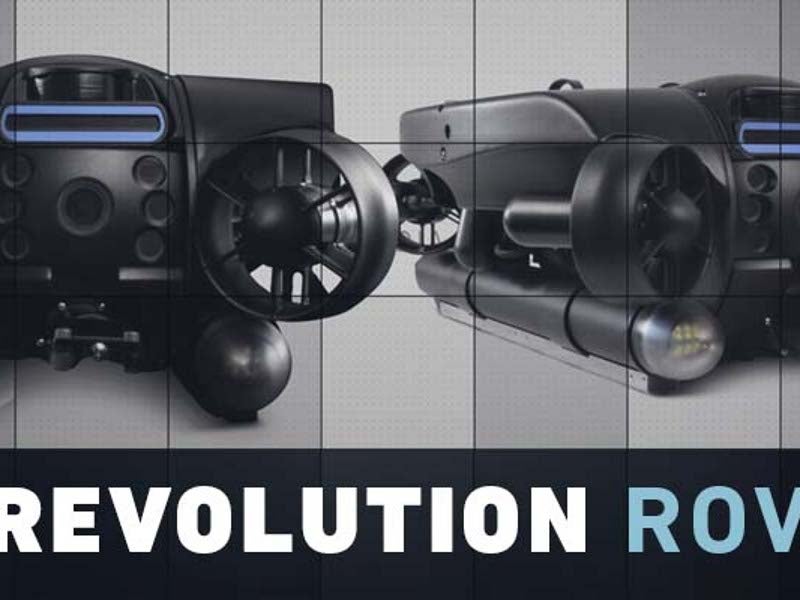Revolution remotely operated vehicle (ROV) is the latest addition to the string of ROVs developed by Deep Trekker, an underwater vehicle manufacturer based in Canada.
The vehicle was introduced at the AUVSI Xponential 2019 unmanned and autonomous systems exhibition held in Chicago, US, in April 2019.
The Revolution ROV is designed to perform remote underwater survey and inspection of explosive devices planted under the surface of the sea. It can also be used to detect and locate illegal objects beneath the surface.
Furthermore, it is suitable for offshore underwater surveys, aquaculture, and marine research applications.
Potential customers of the ROV include naval defence organisations, oil and energy companies, exploration teams, commercial diving service providers, and research institutes.
Revolution ROV design and features
The Revolution ROV features a modular, open-architecture design that allows for the integration of a variety of sensors required for underwater mapping and inspection. The vehicle can be seamlessly deployed in less than a minute.
The body of the underwater vehicle is made up of stainless steel and anodised machined aluminium. Its strength is further reinforced with the usage of carbon fibre and buoyancy foam that resists the ingress of water.
Windows fitted to the ROV are made up of sapphire and acrylic. The unmanned vehicle is easily portable and can be carried to mission location in a wheeled custom pelican air 1650 case.
The combined weight of the ROV system is 26kg in air. The vehicle has a length of 0.71m, width of 0.44m and height of 0.235m.
Payloads carried on Revolution ROV
Coupled with BRIDGE technology and an automated station, the Revolution remotely operated vehicle holds sensors and add-ons such as high-definition cameras, sonars, and a manipulator arm.
The BRIDGE provides wireless connectivity, intuitive controls, and auto-stabilisation, while the automated station delivers a better field of view and enhanced situational awareness along 260º.
The 4K ultra high-definition, 8MP, low-light camera onboard the vehicle captures pictures and records live 4K video with a maximum illumination of 0.001Lux.
Equipped with 7300 Lumens high-efficiency underwater LED lights, the camera offers a 280º field of view.
The manipulator arm can lift loads weighing up to 31.7kg, while the sonars are used to locate underwater objects and map the seafloor.
Navigation and control
The Revolution ROV can be deployed for underwater inspection using a neutrally buoyant tether, which has a length of 800m and diameter of 4.5mm. The breaking strength of the tether is 90kg, while its pull capacity is 136kg.
The vehicle is operated using a waterproof hand-held controller, which features a 178mm wide-angle LCD screen powered by an embedded operating system.
The controller has USB, SD, HDMI and ethernet connectivity. The wide-screen monitor simultaneously displays ultra HD 4K recordings and the sonar data, eliminating the need for external consoles.
The data gathered by the ROV will be relayed to the hand-held controller, which allows the operator to manipulate the vehicle according to the mission profile.
Propulsion and performance
The Revolution remotely operated vehicle is powered by swappable, interchangeable lithium-ion (Li-on) batteries having a rated capacity of 22.2V DC. It drives six infinitely variable, completely reversible propellers.
The batteries offer a run time of up to eight hours and can be interchanged within 30 seconds. It takes approximately three hours to recharge the batteries.
The ROV can remotely conduct an underwater inspection and detect mine-like objects securely in water currents up to 3.5k. It can withstand harsh and dangerous underwater conditions and can be operated in temperatures ranging between -10ºC and 50ºC. It can reach water depths of up to 305m.
The vehicle’s durable construction, coupled with enhanced power, delivers increased manoeuvrability.




